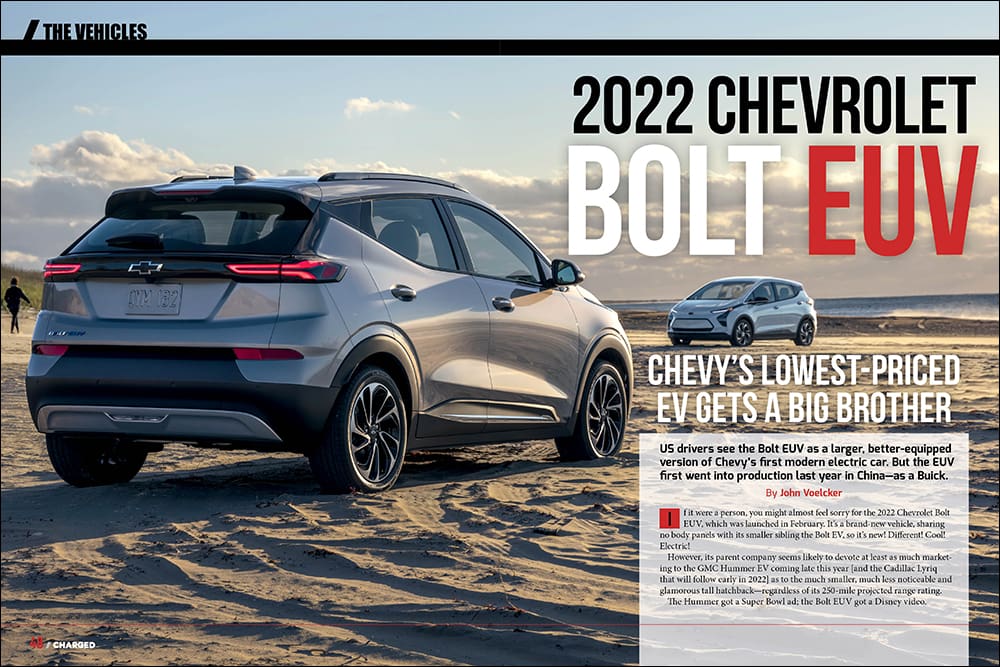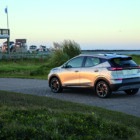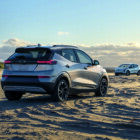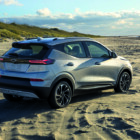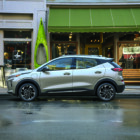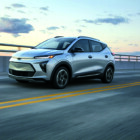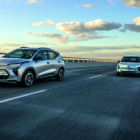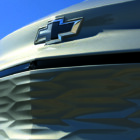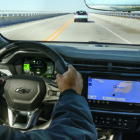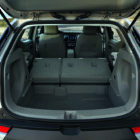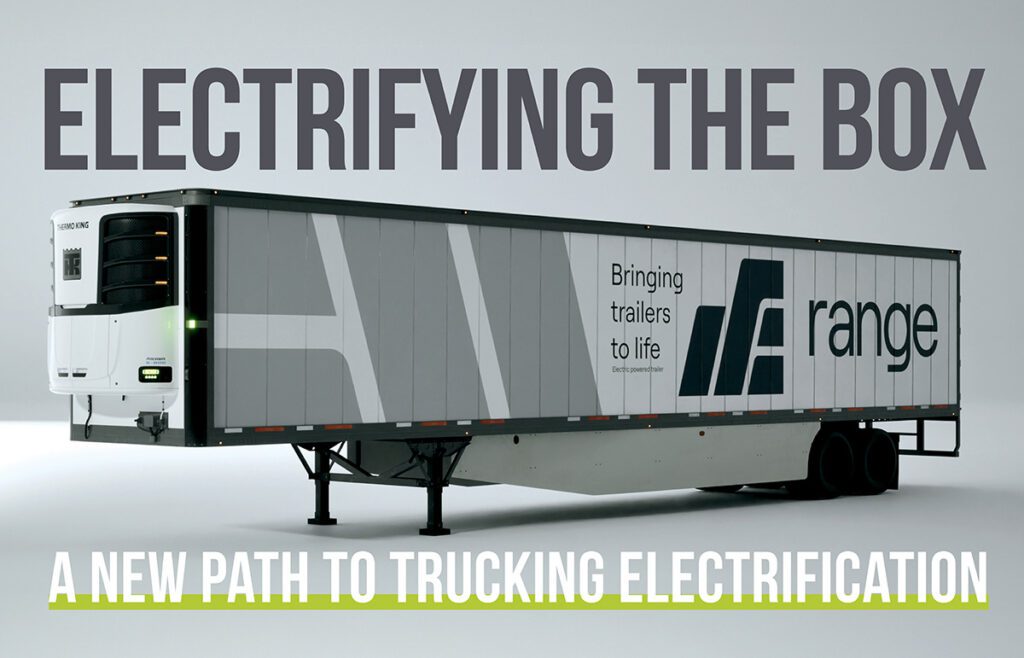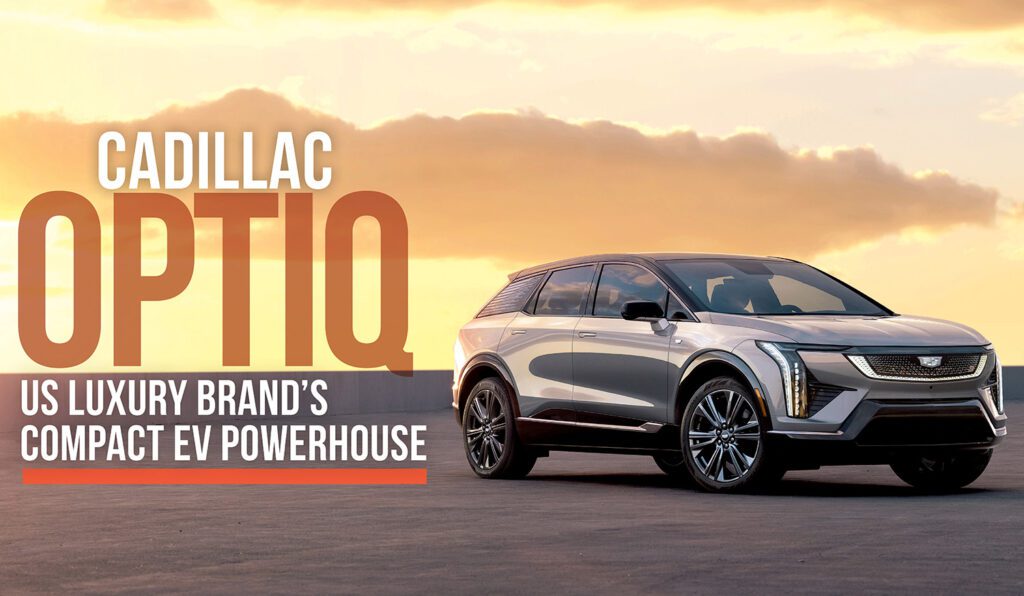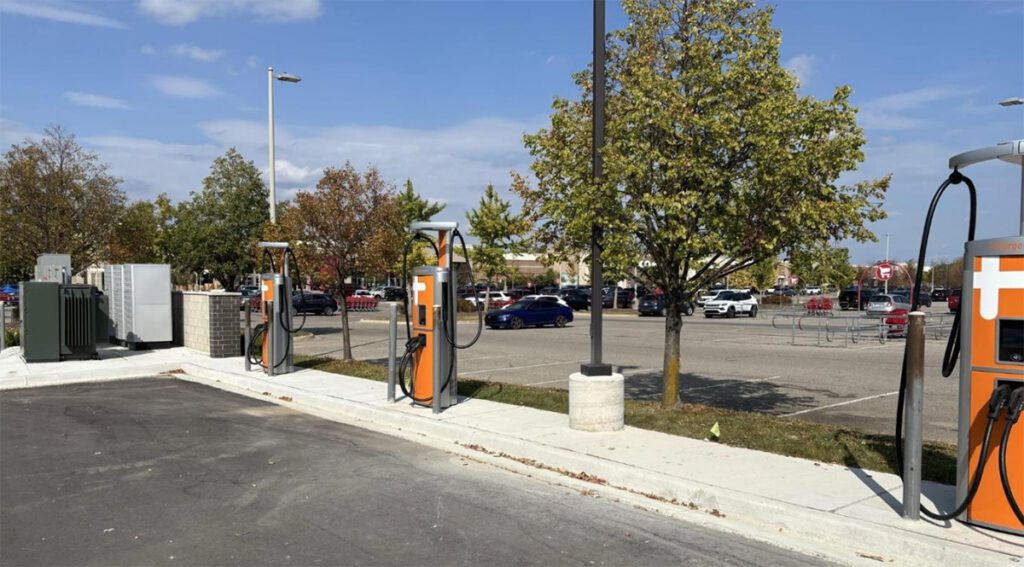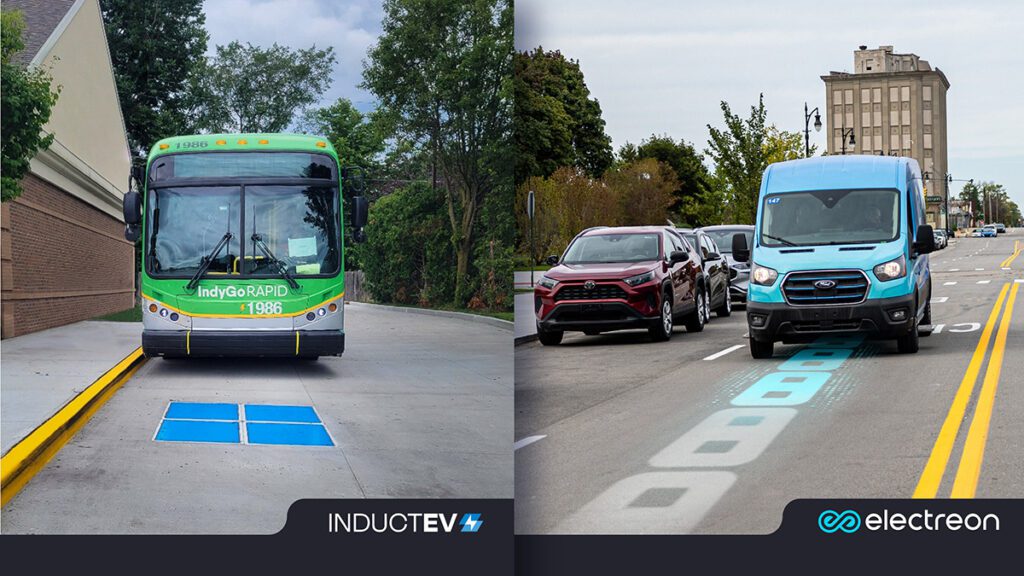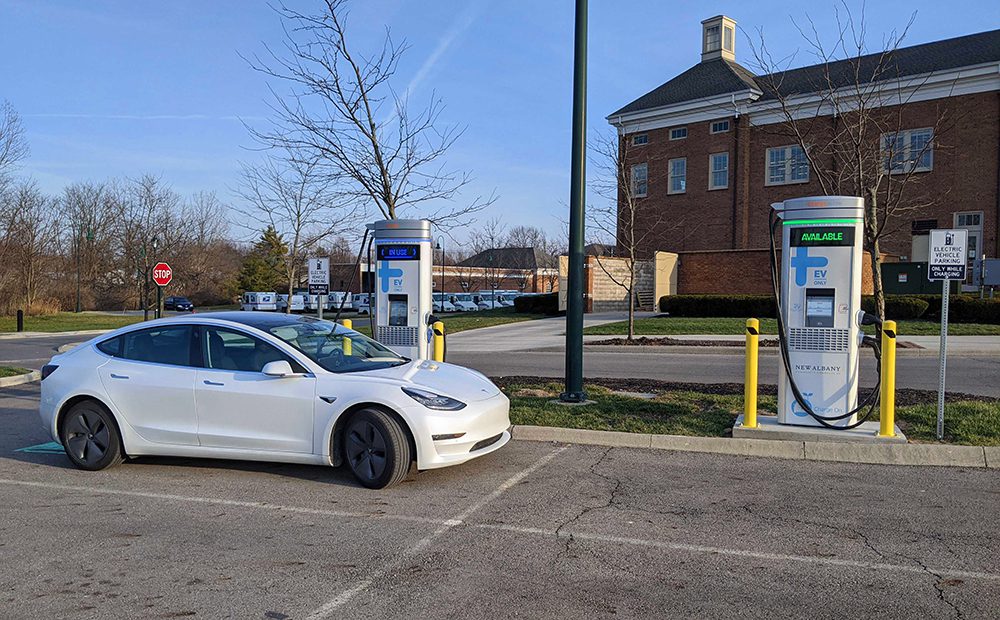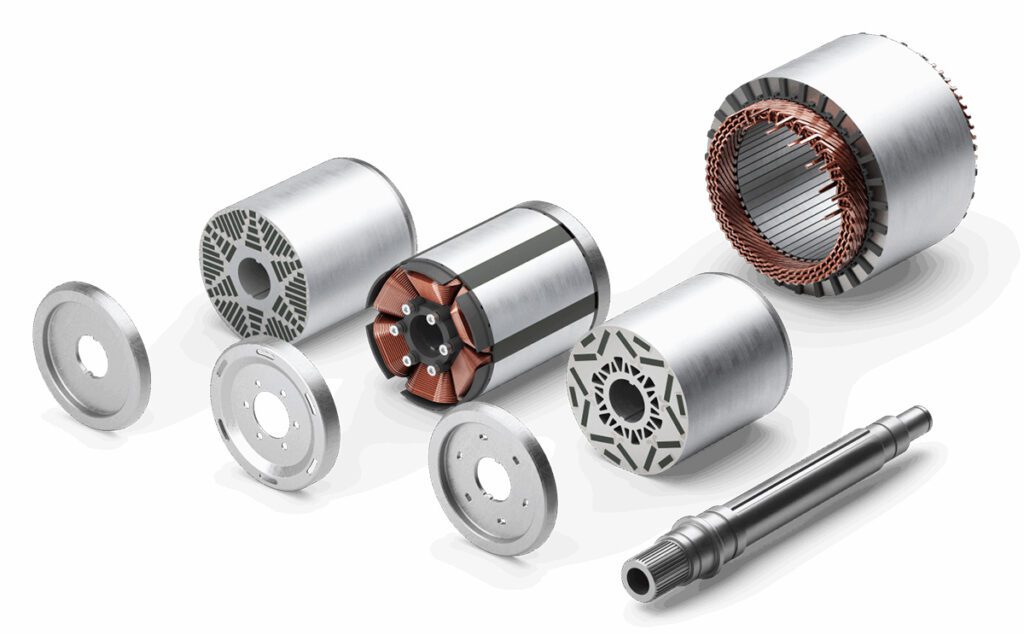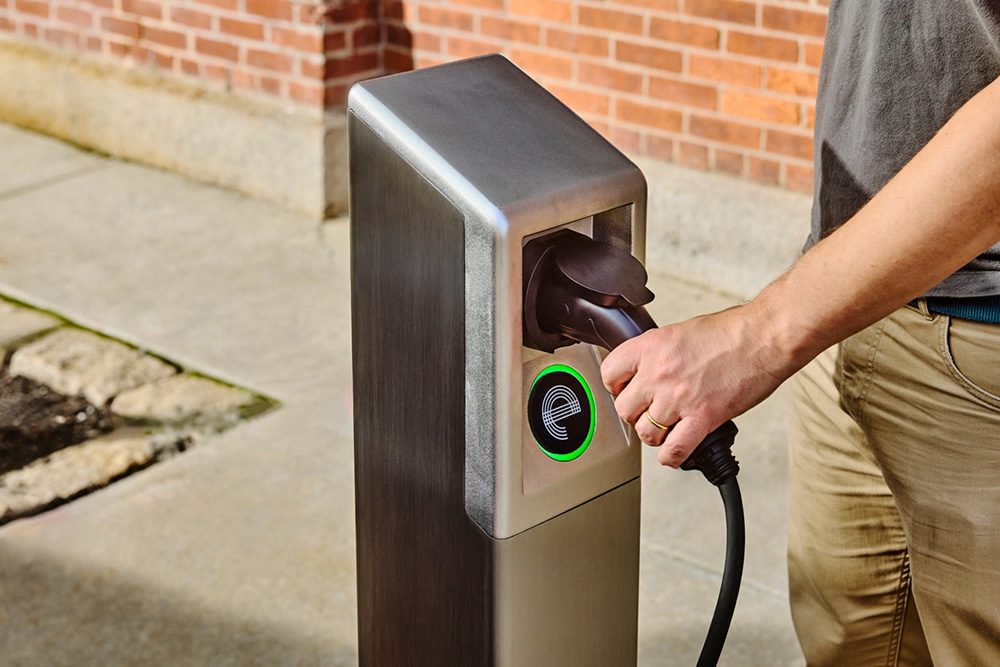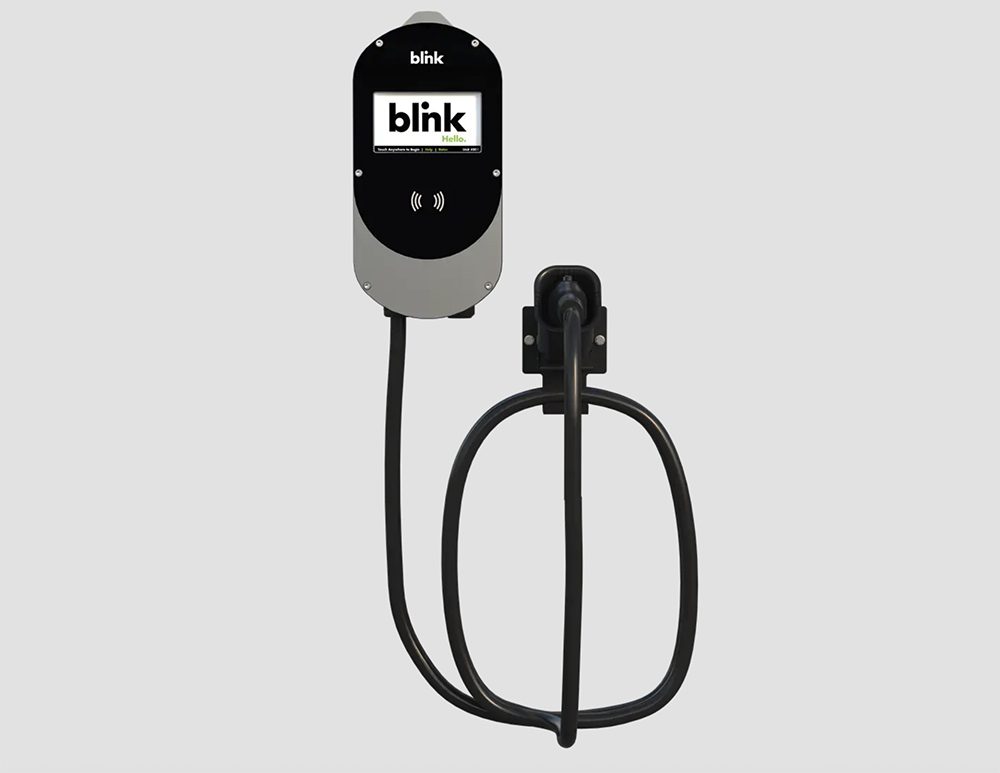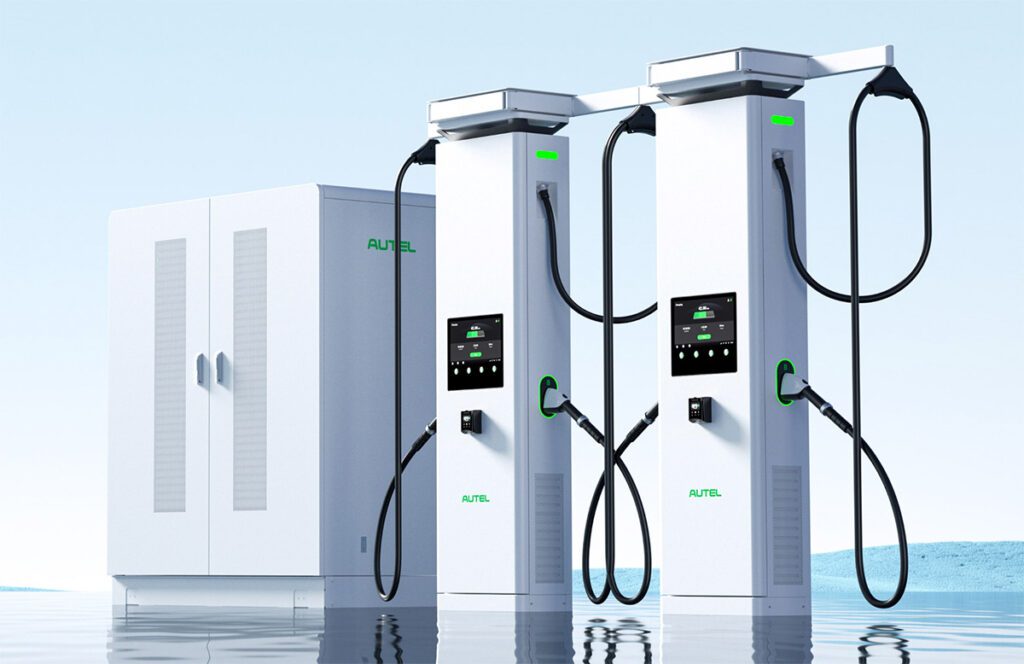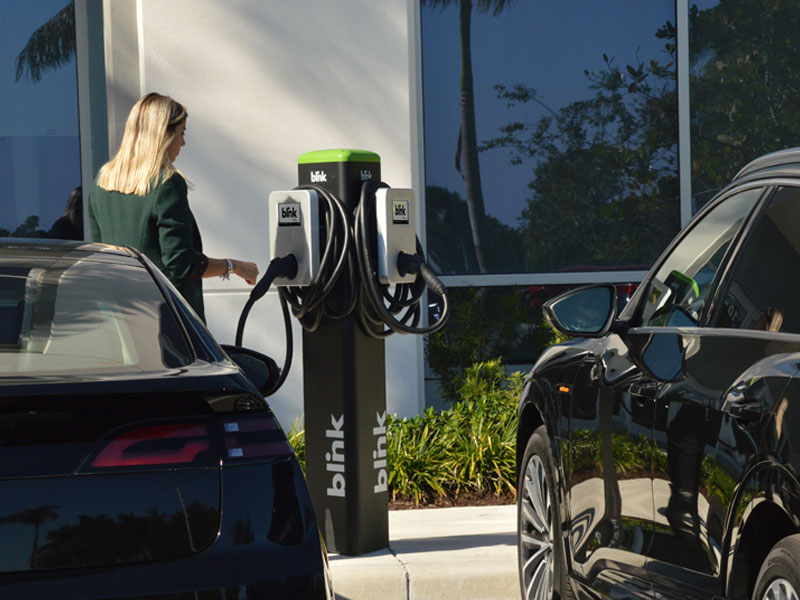US drivers see the Bolt EUV as a larger, better-equipped version of Chevy’s first modern electric car. But the EUV first went into production last year in China—as a Buick.
If it were a person, you might almost feel sorry for the 2022 Chevrolet Bolt EUV, which was launched in February. It’s a brand-new vehicle, sharing no body panels with its smaller sibling the Bolt EV, so it’s new! Different! Cool! Electric!
However, its parent company seems likely to devote at least as much marketing to the GMC Hummer EV coming late this year [and the Cadillac Lyriq that will follow early in 2022] as to the much smaller, much less noticeable and glamorous tall hatchback—regardless of its 250-mile projected range rating.
The Hummer got a Super Bowl ad; the Bolt EUV got a Disney video.
New role: value pricing
That said, the Bolt EUV is an appealing small electric car at a reasonable starting price of $34,000. That’s substantially lower than the price tag of last year’s Bolt EV, and the updated smaller Bolt itself is going to drop more than $5,000, to come in at a starting price of $32,000.
However, the Launch Edition version of the new Bolt EUV—essentially a top-of-the-line Premier trim with 17-inch wheels, a handful of added badges, and an illuminated charge port—sells for a whopping $43,500. All prices include the mandatory destination fee.
The two value-priced Bolts will sit at the bottom of a lineup of Chevrolet electric cars that should be considerably more expansive in two or three years. Chevy already previewed an all-electric compact crossover and a pickup truck, and announced in April that it would build an all-electric Silverado with an estimated 400 miles of rated range at its Factory Zero EV assembly plant in Detroit. Other models will follow—General Motors has promised to sell a dozen or more EVs in North America by 2025.
The Hummer EV will be the first based on the GM’s new Ultium architecture, so these two Bolts will be the last to use what GM calls its BEV2 architecture.
Those future vehicles will all be based on the company’s new Ultium architecture, a highly flexible battery and drivetrain system that allows for a variety of vehicle types and battery arrangements. The Hummer EV will be the first of those, so the two Bolts will be the last to use what GM calls its BEV2 architecture.
More cabin space, coming for China
Interviews earlier this year with Program Chief Engineer Jesse Ortega and Vehicle Chief Engineer Jeremy Short revealed more of the story behind the Bolt EUV that we’ll start to see on US roads later this summer.
The Chevrolet product executives say the EUV was developed by listening intently to early buyers of the Bolt EV, and giving them what they wanted. Almost from the day the smaller Bolt EV started deliveries back in December 2016, owners started asking for more rear-seat room.
That Bolt was designed to have a “B-segment exterior” (subcompact) with “C-segment interior space” (compact), Ortega said, so it confused some shoppers, who saw it as too small for four people. The new EUV gains a 3-inch longer wheelbase and another 3.3 inches in added length on top of that.
In September 2017, Chevy’s goal of providing more room dovetailed neatly with a news story that caused many global automakers to tear up their product plans. That month, Chinese state media announced that the national government would ban the sale of vehicles with internal combustion engines—at some future date that wasn’t specified.
GM sells more vehicles in China than it does in North America, so it was clear that its Chinese lineup would need a greater variety of battery-electric vehicles. A BEV2 entry would thus join planned plug-in hybrid and battery-electric models built on adaptations of the underpinnings used for the Volt plug-in hybrid, which itself was canceled late in 2018.
The BEV2 vehicle for China had to have a larger rear seat as well, since in China many car owners don’t actually buy cars to drive—they ride in the back and leave the driving to hired chauffeurs, especially in traffic-choked cities. (Which is why that country has so many extended-wheelbase versions of luxury cars: the rear compartment sells the car, not the driver’s seat.)
Two BEV2 variants: Buick Velite 7, Bolt EUV
GM’s BEV2 platform and powertrain engineering are headquartered in its technical center in Warren, Michigan. To create the larger BEV2 vehicle, Ortega’s team worked with its Chinese advanced-engineering counterparts in Shanghai, along with SAIC-GM’s design studio and engineering center. Their expertise was crucial to understanding Chinese customer tastes and design preferences, and to creating a vehicle that could pass “very strict type approval and testing” processes there.
The Buick Velite 7 shares all its structural “hard points” with the Bolt EUV we see, but none of the exterior sheet metal. Yet the two were developed in parallel, with largely the same passenger volume.
The resulting Chinese-market vehicle, built in Shanghai with battery packs assembled in a plant next door, was the Buick Velite 7, launched late in the summer of last year. It shares all its structural “hard points” with the Bolt EUV we see, but none of the exterior sheet metal. Yet the two were developed in parallel, with largely the same passenger volume—or “Zones and Limits,” as they’re called by the product team.

Essentially, what Chinese Buick buyers and North American Bolt EUV buyers see on the outside is entirely different, but the vehicles are built on the same structure, and use identical powertrains. Throttle feel and suspension tuning differ depending on market preferences, and official ratings for power and range differ based on each country’s testing regimens.
It’s worth noting that the Bolt EUV was originally meant to launch in the US last year, shortly after the Velite 7 went on sale. In the spring of 2020, at the height of uncertainty over the course of the Covid pandemic, GM decided to postpone both the Bolt EUV and the mid-cycle refresh of the existing Bolt EV for almost a year. The smaller car got new styling and a completely new interior, but there were no powertrain updates after its 2020 increase in battery size and corresponding EPA range rating, from 238 to 259 miles.
Driving impressions
From the outside, the Bolt EUV is still clearly an electric Chevrolet Bolt. Its front end is taller and squarer, and it’s longer, but its ground clearance is only 0.2 inches higher than the smaller Bolt EV. It’s pretty clearly that car’s big brother.
The seats and dashboards of each car will be new to owners of 2017-2021 Bolt EVs, though familiar. What differs between the two is the rear cabin area. The EUV offers a rear seat that even American-sized occupants of 6 feet or more can occupy. The upright seating position and roof height help, though while there’s plenty of headroom, rear-seat occupants’ knees will be a bit higher than if the car had conventional footwells—which it doesn’t, since the 65 kWh lithium-ion battery pack sits under the cabin floor.
On the road, the Bolt EUV is peppy, and has less body roll than you’d expect. The optional Super Cruise is accurately described as the only currently-available hands-off adaptive cruise control, as even Tesla’s so-called Autopilot requires you to keep your hands on the steering wheel.
We’d happily drive a Bolt EUV as our daily vehicle, presuming we had a home charging station. And, as most drivers of EVs with more than 200 miles of range quickly learn, it’s unnecessary to recharge every night when average daily mileage for US vehicles is about 30 miles.
50 kilowatts: far from fast
The one drawback to the Bolt EUV is its so-called fast charging, which remains at the same rates offered way back in December 2016. GM is known for conservative battery management, which thus far has paid off in a negligible rate of battery degradation over time. But its decision to put all its eggs for the future in the Ultium basket, and freeze development on the BEV2 powertrain after 2020, may frustrate Bolt EUV drivers who want to use the car for road trips longer than 200 or so miles.
Under optimal conditions, the Bolt’s charge curve runs slightly above 50 kilowatts when the battery’s state of charge is between the single-digit percentages and about 50 percent. Then it starts to taper down, to about half that rate, up to the 80 percent level. The practical effect is that charging from, say, 10 percent to 80 percent takes up to an hour—which may require two consecutive charging sessions at a single fast charging site.
50 kW charging leaves the Bolt EUV uncompetitive for single-vehicle households who occasionally need to cover long distances. Even humble Hyundai Ioniq Electrics and some Nissan Leafs can do 70 to 100 kW.
Teslas have charged at up to 125 kW for many years, and in some models, that rate now goes as high as 250 kW. Even humble Hyundai Ioniq Electrics and some Nissan Leafs can do 70 to 100 kW. And of course the Porsche Taycan, GM’s future Ultium-powered EVs, and vehicles built on Hyundai-Kia’s new E-GMP platform, all offer the possibility of charging at up to 270 kW, depending on configuration.
That leaves the Bolt EUV uncompetitive for single-vehicle households who occasionally need to cover long distances, and it may eliminate the car from consideration by some buyers who otherwise like the idea of long range and interior volume within compact dimensions. Neither Bolt offers all-wheel drive, though crawling all over a bodyshell several years ago suggested that such a feature would have been pretty simple to add.
Nonetheless, the new 2022 Chevy Bolt EUV is a slightly larger version of the Bolt EV that 100,000 buyers in North America, South Korea, and other markets know and love. And as a more upmarket Buick, GM and its partner SAIC hope it will hit the growing market for New Energy Vehicles in China just right. Early indications are that it has.
GM has roughly doubled production capacity for the Bolt line at its assembly plant in Orion, Michigan. That suggests up to 50,000 Bolts a year could be built.
As GM seems unlikely to produce high volumes of Ultium vehicles until the end of 2022, the Bolt pair will remain the automaker’s only affordable EV offerings.
As GM seems unlikely to produce high volumes of Ultium vehicles until the end of 2022, the Bolt pair will remain the automaker’s only affordable EV offerings for a while. The Bolt EUV and EV could well expand the audience for cost-efficient electric transport—even if they don’t get all the marketing pizzaz. They’ll arrive at Chevy dealers in volume this summer.
This article appeared in Charged Issue 54 – March/April 2021 – Subscribe now.







